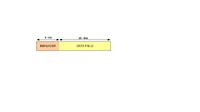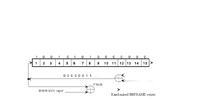win2010
Member level 1
Hello,
Input bits are continuous but I need add Header for each and every time, so only I`m missing input.
I designed this by taking Buffer but this is going Overflow after some time.
Ex:
I had continuous input bits and for each and every 20 bits of input I need to generate 5 bits of Header to 20 bits data.
For 20 input bits i generated 25 bits. while sending to output these 25 bits, i am missing 5 bits of next coming inputs.
I need output should not have any intermediate delay.....
Help me....
Vinayak
Input bits are continuous but I need add Header for each and every time, so only I`m missing input.
I designed this by taking Buffer but this is going Overflow after some time.
Ex:
I had continuous input bits and for each and every 20 bits of input I need to generate 5 bits of Header to 20 bits data.
For 20 input bits i generated 25 bits. while sending to output these 25 bits, i am missing 5 bits of next coming inputs.
I need output should not have any intermediate delay.....
Help me....
Vinayak

